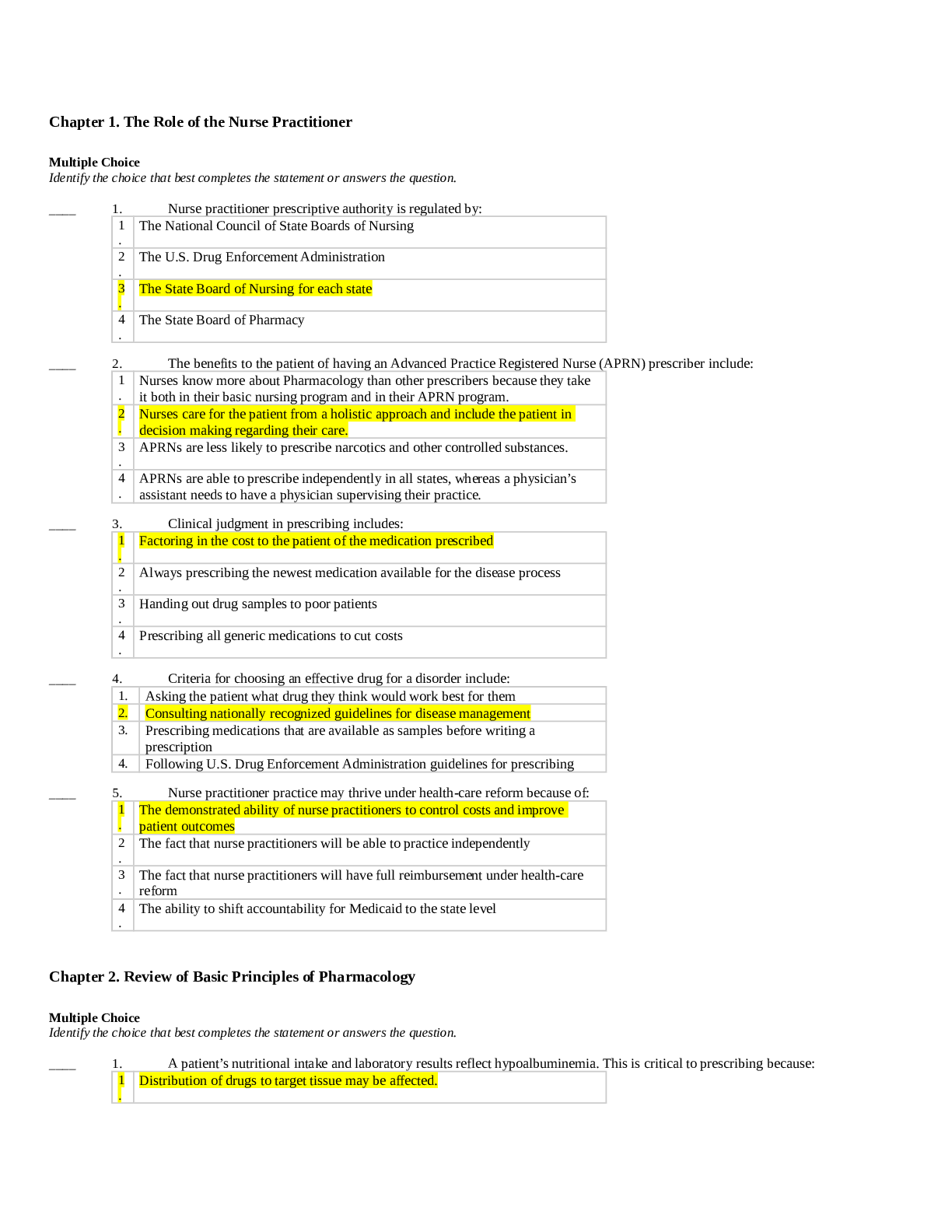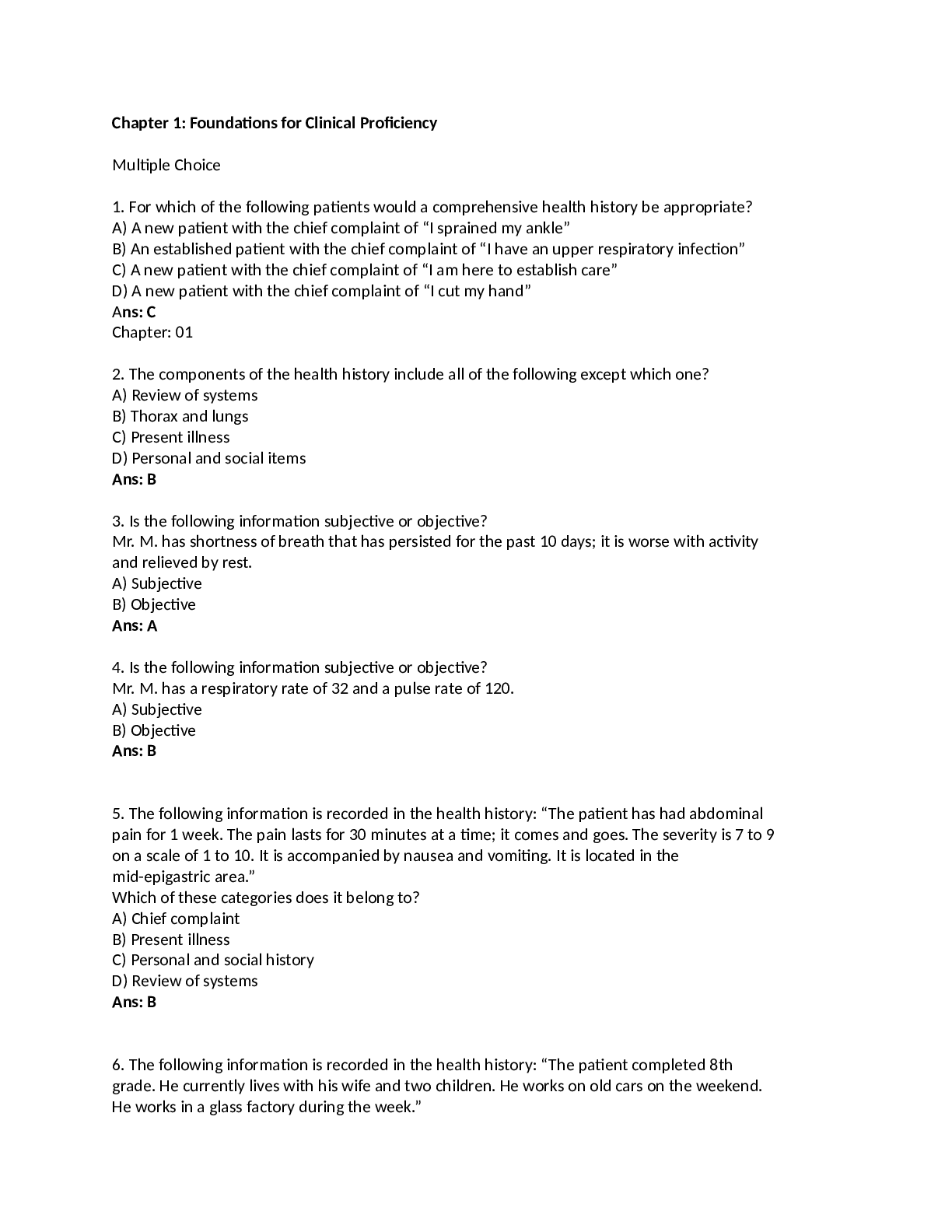*NURSING > TEST BANK > Introduction to Medical-Surgical Nursing Best Test Bank Ever Rated A (With Questions and Answers) (All)
Introduction to Medical-Surgical Nursing Best Test Bank Ever Rated A (With Questions and Answers)
Document Content and Description Below
Chapter 1: Introduction to Medical-Surgical Nursing Test Bank MULTIPLE CHOICE 1. Which action demonstrates that the nurse understands the purpose of the Rapid Response Team? a. Monitoring the clie... nt for changes in postoperative status such as wound infection b. Documenting all changes observed in the client and maintaining a postoperative flow sheet c. Notifying the physician of the client’s change in blood pressure from 140 to 88 mm Hg systolic d. Notifying the physician of the client’s increase in restlessness after medication change ANS: C The Rapid Response Team (RRT) saves lives and decreases the risk for harm by providing care to clients before a respiratory or cardiac arrest occurs. Although the RRT does not replace the Code Team, which responds to client arrests, it intervenes rapidly for those who are beginning to decline clinically. It would be appropriate for the RRT to intervene when the client has experienced a 52- point drop in blood pressure. Monitoring the client’s postoperative status, maintaining a postoperative flow sheet, and notifying the physician of a change in the client’s status after a medication change would not be considered activities of the Rapid Response Team. DIF: Cognitive Level: Comprehension/Understanding REF: pp. 2-3 TOP: Client Needs Category: Safe and Effective Care Environment (Management of Care—Collaboration with Interdisciplinary Team) MSC: Integrated Process: Nursing Process (Assessment) 2. The Joint Commission focuses on safety in health care. Which action by the nurse reflects The Joint Commission’s main objective? a. Performing range-of-motion exercises on the client three times each day b. Ensuring that the client is eating 100% of the meals served to him or her c. Assessing the client’s respirations when administering opioids d. Delegating to the nursing assistant to give the client a complete bath daily ANS: C It is important for the nurse to assess respirations of the client when administering opioids because of the possibility of respiratory depression. The other interventions may or may not be necessary in the care of the client and do not focus on safety. DIF: Cognitive Level: Application/Applying or higher REF: N/A TOP: Client Needs Category: Safe and Effective Care Environment (Safety and Infection Control) MSC: Integrated Process: Nursing Process (Assessment) 3. Which action by the nurse shows an understanding of the principle of self-determination? a. Allowing a postoperative client to decide to take medication with fruit juice rather than water b. Allowing a teenager to decide not to go to a clinic when there is evidence that she is having profuse vaginal bleeding c. Allowing a parent to decide not to proceed with a lifesaving operation for a 12-year-old client d. Allowing an older client with dementia to decide not to take cardiac medication throughout the shift ANS: A Respect for people is one of three basic ethical principles that nurses and other health care professionals should use as a basis for clinical decision making. Respect implies that clients are treated as autonomous individuals capable of making informed decisions about their care. This client autonomy is referred to as self-determination, or self-management, and is best illustrated by allowing a client to decide to take medication with fruit juice rather than water. The other answer choices would not illustrate self-determination appropriately and might possibly endanger the client’s life. DIF: Cognitive Level: Application/Applying or higher REF: N/A TOP: Client Needs Category: Safe and Effective Care Environment (Management of Care—Ethical Practice) MSC: Integrated Process: Nursing Process (Assessment) 4. The nurse is initiating a series of teaching sessions with an older client. What is the nurse’s highest-priority, client-centered action before beginning the session? a. Ensure that the client’s family is present and will participate. b. Make certain that the client is wearing his glasses. c. Have printed handouts ready to use during the session. d. Schedule the session for early evening after the client’s meal. ANS: B The most important client-centered action is to ensure that the client is wearing his or her glasses. The ability to see adequately will outweigh the need for family presence, use of printed handouts, and hunger (or lack thereof). DIF: Cognitive Level: Application/Applying or higher REF: N/A TOP: Client Needs Category: Health Promotion and Maintenance (Principles of Teaching/Learning) MSC: Integrated Process: Teaching/Learning [Show More]
Last updated: 1 year ago
Preview 1 out of 1570 pages
Instant download

Buy this document to get the full access instantly
Instant Download Access after purchase
Add to cartInstant download
Reviews( 0 )
Document information
Connected school, study & course
About the document
Uploaded On
Sep 02, 2021
Number of pages
1570
Written in
Additional information
This document has been written for:
Uploaded
Sep 02, 2021
Downloads
0
Views
158

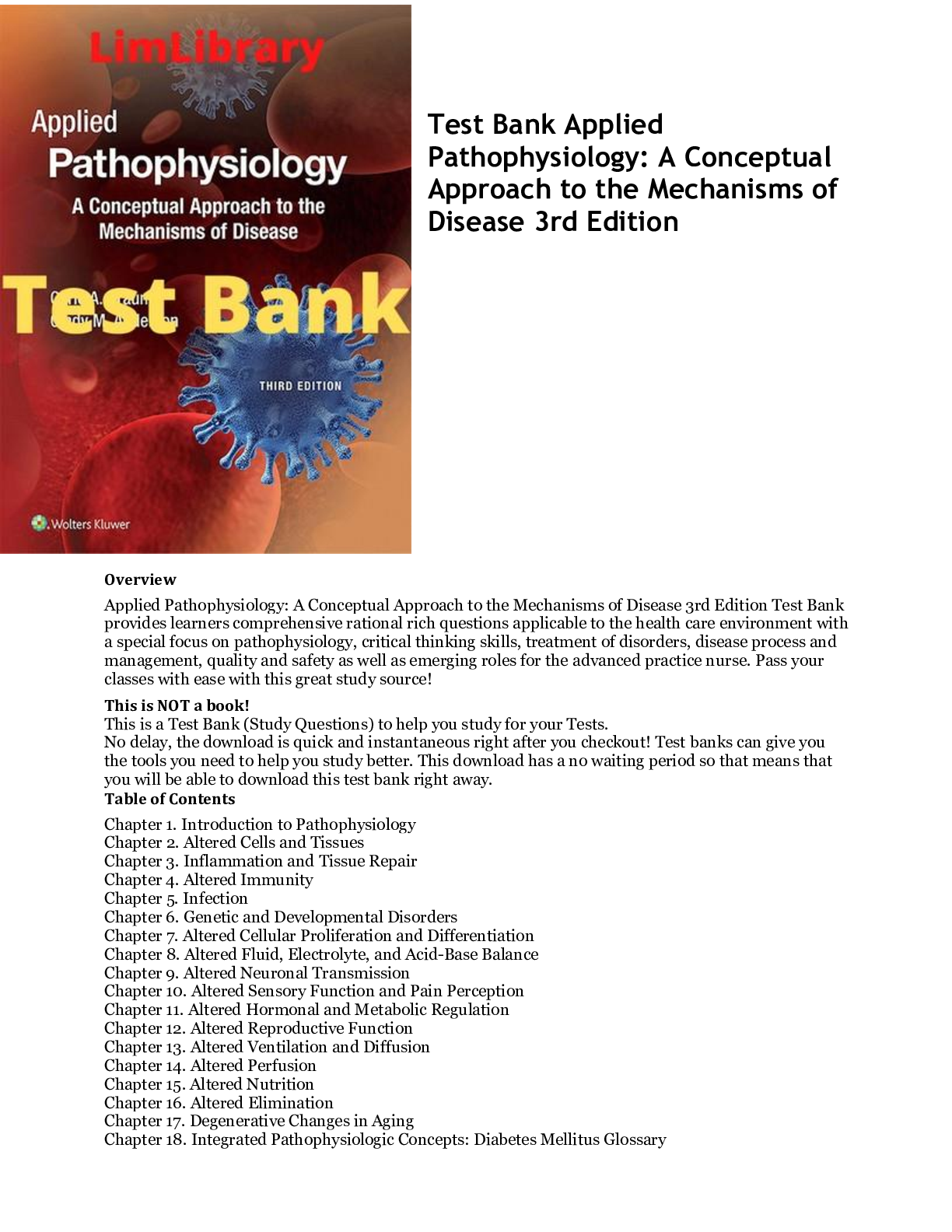

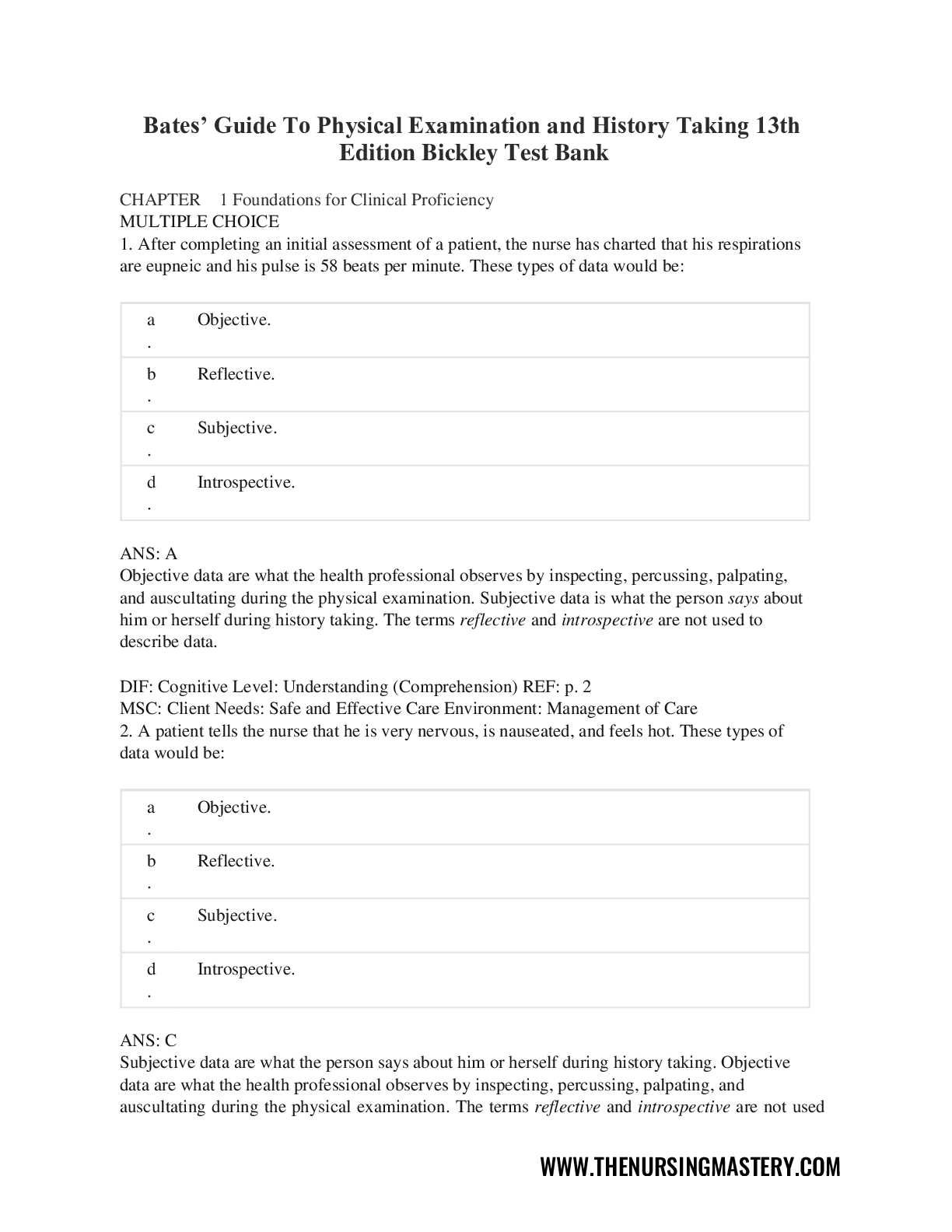
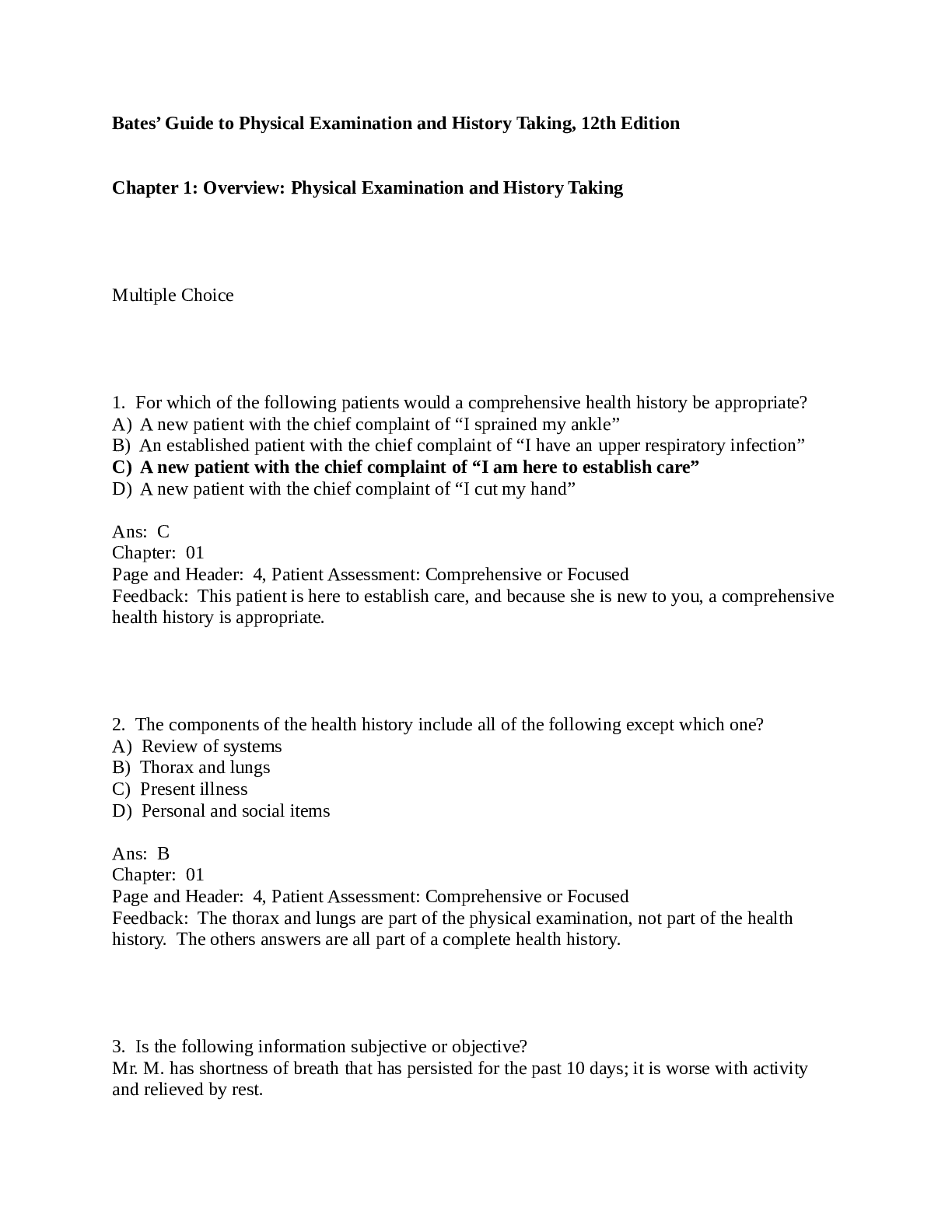
.png)
.png)
.png)

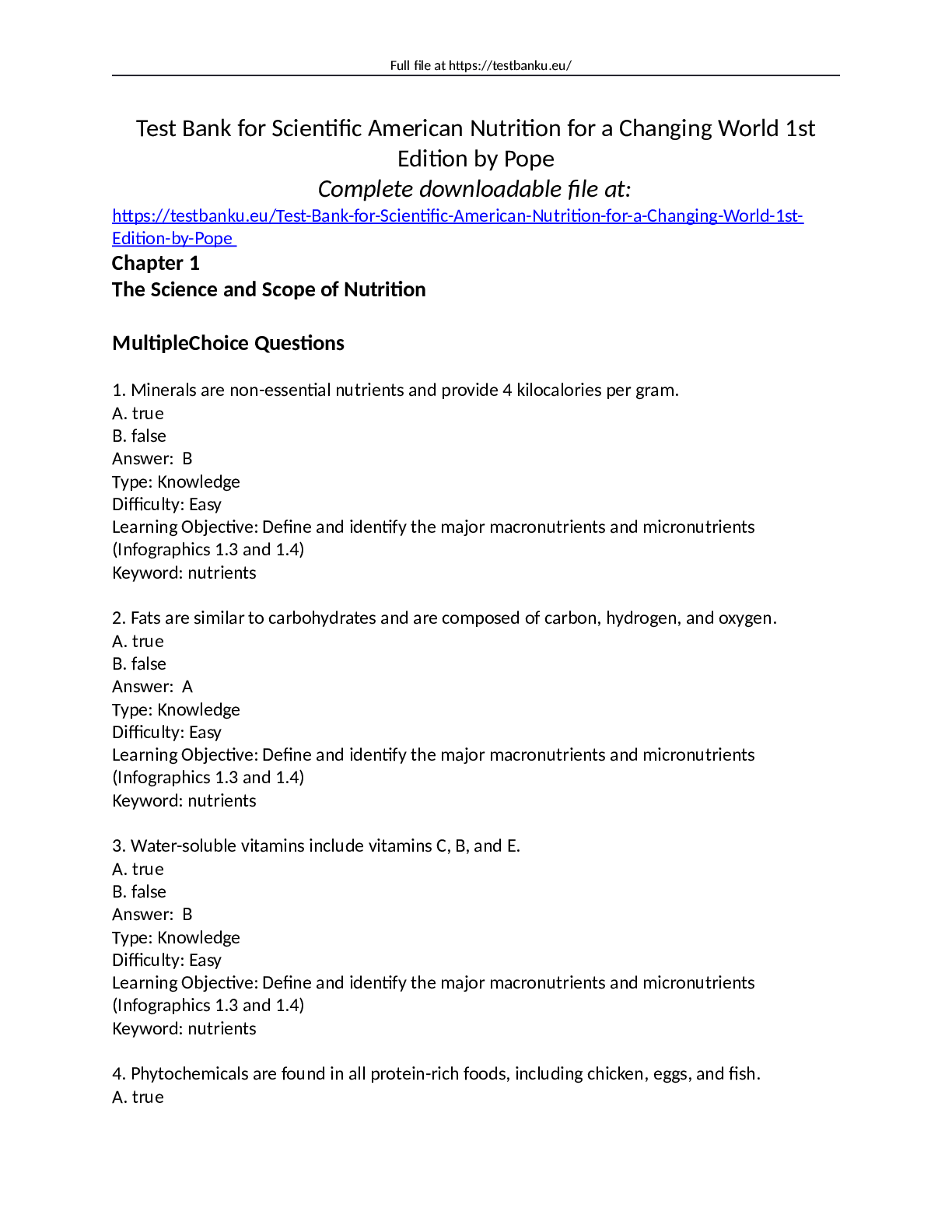
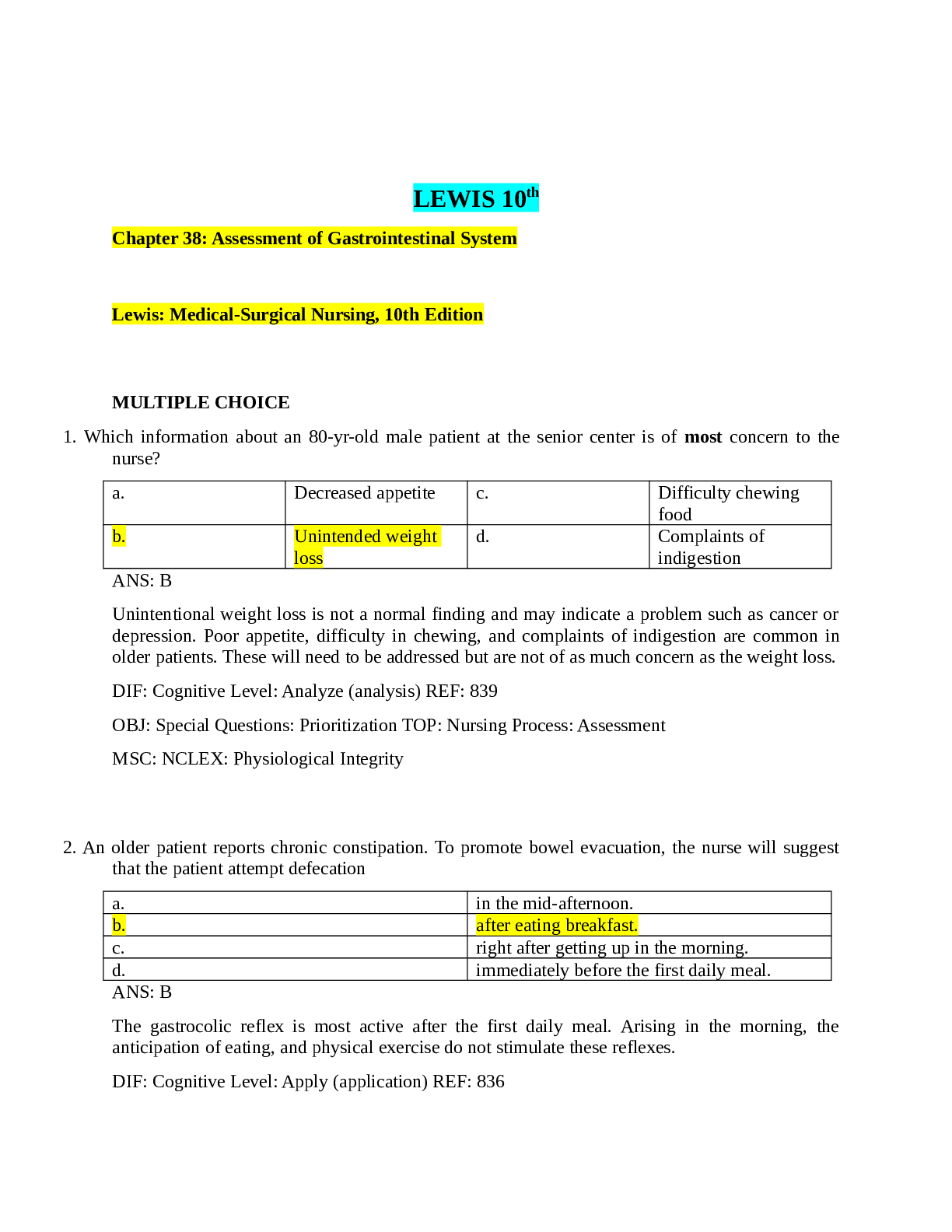

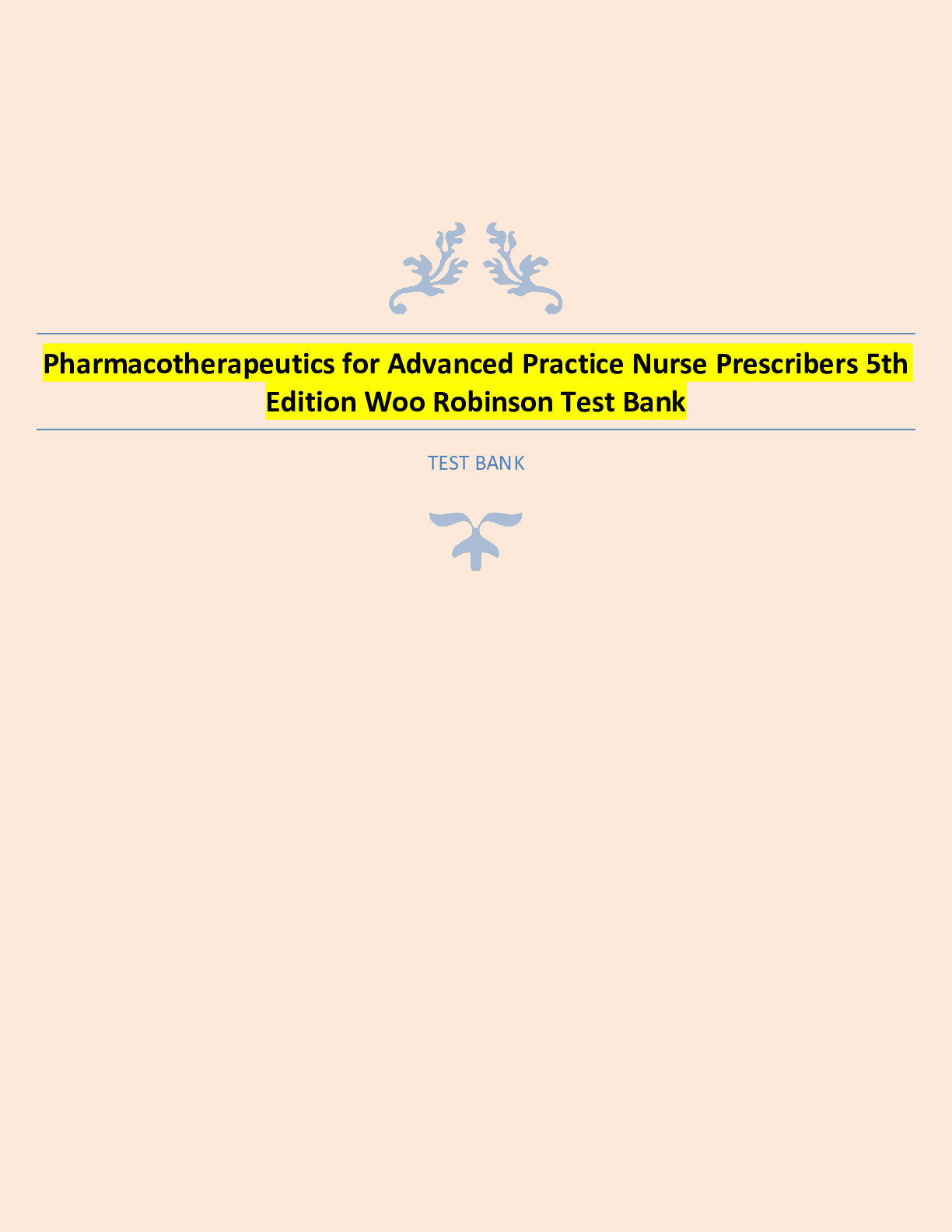
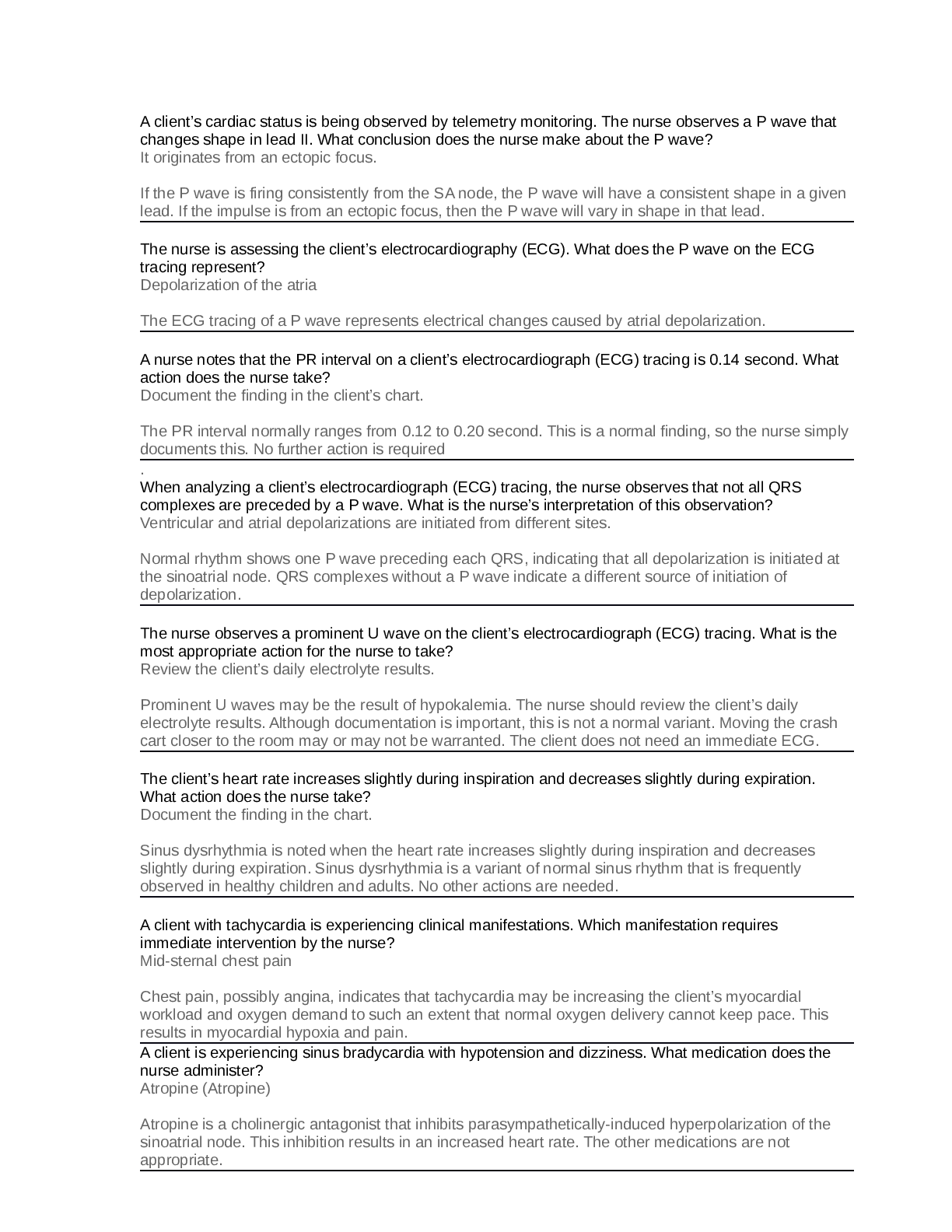
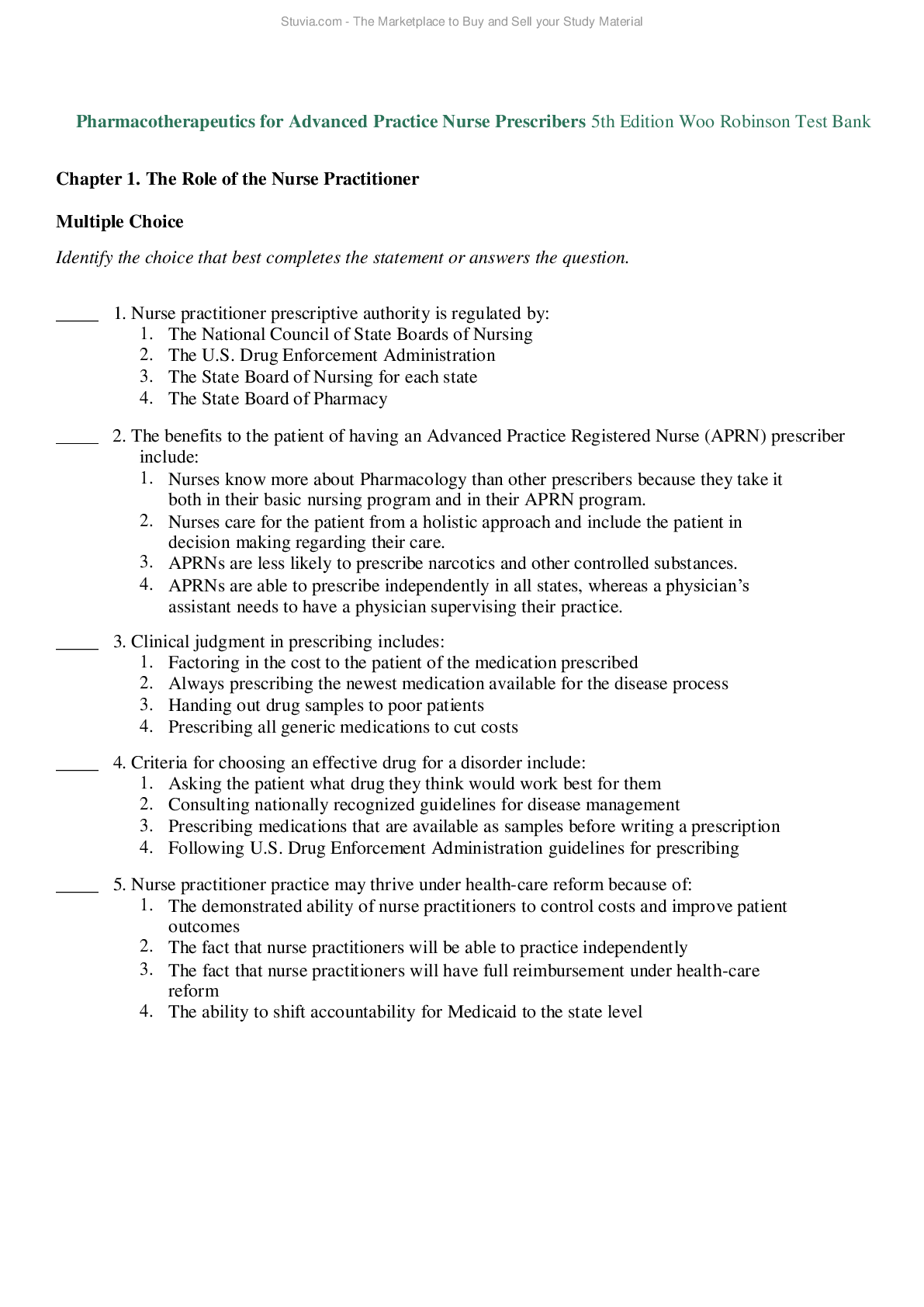

_compressed.png)
